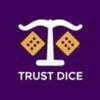This episode happened to me recently in Las Vegas. I was playing blackjack making $10 wagers when I was approached by a pit boss asking if there was anything he could do for me. “Sure,” I replied. Can I get a dinner at the steakhouse?” His response was, “Let me track your action for a few minutes and I’ll tell you what we can comp you.” Well, as luck would have it, the cards weren’t going my way and I left without following up on that steak dinner. But I still want to know what the pit boss meant by tracking my action for a comp? Stanley K.
First, Stanley, the comp (steak dinner) is nothing more than a reward system for the worthy play of high volume players. The casino thanks you by rebating back some of your losses because you played at such a level, for such a period of time, and because they have such an advantage over you; the longer you play the more they win. So here’s your carrot and please come back again.
Tracking your play means taking your average bet and multiplying it by the hours played, speed of the game and the casino advantage. This, in theory, should equal your loss.
In your case, Stanley, you mentioned betting $10 a hand. With two hour’s play, averaging 100 hands per hour, coupled with the house advantage of five percent they hold over the average blackjack player, this tells Mr. Pit Boss you’re going to lose $100. Because mathematically you’ll lose that Ben Franklin, the casino can afford to rebate your losses in the form of a corn-fed beef dinner.
The warning here is that to give comps, the casino is going to demand action, preferably losing action. They also want you to bet a decent chunk of change for an extended period of time to justify giving you freebies.
Of course, Stanley, I always recommend grinding any comp you can get out of the casino, but I caution all players never to gamble just to receive them. It’s much better to make sensible, low house advantage wagers, which will increase your winning opportunities.
You said in a recent column that it was easier to hit my state lottery than to get a sequential royal flush. I can’t be sure, but it seems I’ve gotten the latter but was never fortunate enough to hit the lottery. Are you sure? Shirley L.
Using a software program called Statistics Menu from Spreadware, I find that the numbers crunch this way. The chances of hitting the California lottery are 18,009,460 to one. For an ascending royal flush in any suit, the chances are one in 311,875,119, a difference of elephantine proportions.
These “gimmick” bonus jackpots are nothing more than a marketing scheme to induce play. In most cases, Shirley, it’s more than a challenge to win, it’s impossible.
Which slot machine revolutionized slots as we know them today? Jeff C.
My answer, Jeff, will subject me to heated debate among one-armed bandit collectors- of which I’m not one-but my biased guess would be the 1964 “Money Honey” manufactured by Bally’s. This machine was the first to have electronic circuitry to read the reels, a hopper, relays for protection against slot cheating and a brightly lit front end. The latter, mind you, was not for esthetics but for inducing play.
On a recent trip to Las Vegas, I noticed a fascinating slot machine on display that was built from a wooden cowboy. As a collector of gambling artifacts, I would like to add one to my collection. Two questions: Are these machines a rarity? And who designed them? Stewart K.
Scarce, yes, as only 92 were made in 1950. The ingenious cowboy artist who created the life-size human figures on slot machines was Frank Polk.




















